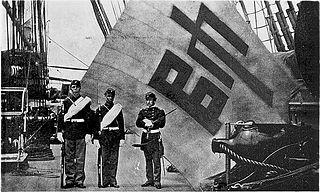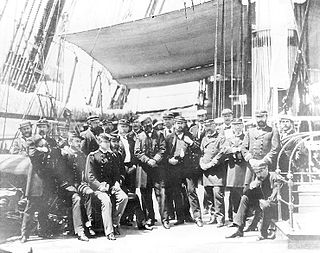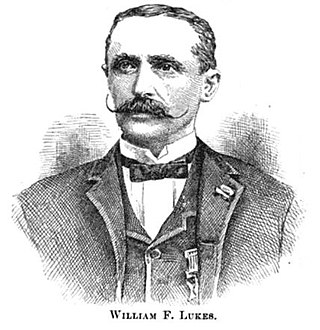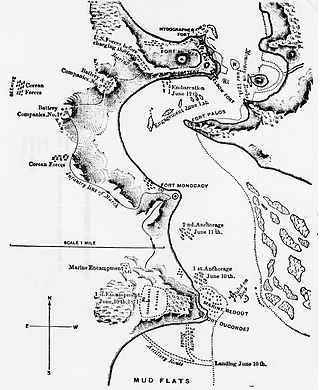
The United States expedition to Korea, known in Korea as the Shinmiyangyo or simply the Korean Expedition, was an American military action in Korea that took place predominantly on and around Ganghwa Island in 1871.

Hugh Wilson McKee was an American naval officer in the 1870s who participated in the United States expedition to Korea in 1871.

John MacKenzie was a sailor in the United States Naval Reserve and a recipient of the Medal of Honor.
Patrick Mullen is one of only 19 servicemen to twice receive the Medal of Honor. He was a member of the United States Navy.

William F. Lukes was a United States Navy sailor and a recipient of America's highest military decoration—the Medal of Honor—for his actions in the 1871 Korean Expedition.

John Coleman was a United States Marine who received the United States military's highest decoration for bravery—the Medal of Honor—for his actions during the Korean Expedition. He was Irish-born, and received the Medal for saving the life of Boatswain's Mate Alexander McKenzie while under enemy attack on the USS Colorado.

Frederick Franklin was a United States Navy sailor who received the Medal of Honor for actions during the 1871 Korean Campaign.

William Troy entered service in the US Navy from Massachusetts as a United States Navy sailor. For bravery in action during the 1871 Korean Expedition he received the Medal of Honor on June 11, 1871. He was part of the party that rescued the mortally wounded Hugh McKee at Citadel Korea and was himself wounded and specifically commended by the Lieutenant.

Samuel F. Rogers was a United States Navy Quartermaster received the Medal of Honor for actions during the Korean Expedition. He was awarded the medal for his rescue of the mortally wounded Lieutenant Hugh McKee.
William Moore was a United States Navy Medal of Honor recipient.
Edward G. Allen was an American sailor serving in the United States Navy during Boxer Rebellion who received the Medal of Honor for bravery.
Luovi Halling was a United States Navy sailor and a recipient of the United States military's highest decoration, the Medal of Honor, for attempting to rescue a shipmate from drowning during a storm.
Alexander Peters was a United States Navy sailor and a recipient of the United States military's highest decoration, the Medal of Honor, for attempting to rescue a shipmate from drowning during a storm.
Frederick Muller was a sailor serving in the United States Navy during the Spanish–American War who received the Medal of Honor for bravery.
Alexander Parker was a United States Navy sailor and a recipient of the United States military's highest decoration, the Medal of Honor.
James F. Sullivan (1857–1917) was a United States Navy sailor and a recipient of the United States military's highest decoration, the Medal of Honor.

The Battle of Ganghwa was fought during the conflict between Joseon and the United States in 1871. In May, an expedition of five Asiatic Squadron warships set sail from Japan to Korea in order to establish trade relations, ensure the safety of shipwrecked sailors, and to find out what happened to the crew of the SS General Sherman. When American forces arrived in Korea, the originally peaceful mission turned into a battle when guns from a Korean fort suddenly opened fire on the Americans. The battle to capture Ganghwa Island's forts was the largest engagement of the conflict.

Charles Robinson was a Union Navy sailor in the American Civil War and a recipient of the U.S. military's highest decoration, the Medal of Honor, for his actions during an expedition on the Yazoo River.

Charles Deakin, born Charles Deykin, was a Union Navy sailor in the American Civil War and a recipient of the U.S. military's highest decoration, the Medal of Honor, for his actions at the Battle of Mobile Bay.
Alexander McKenzie may refer to:








